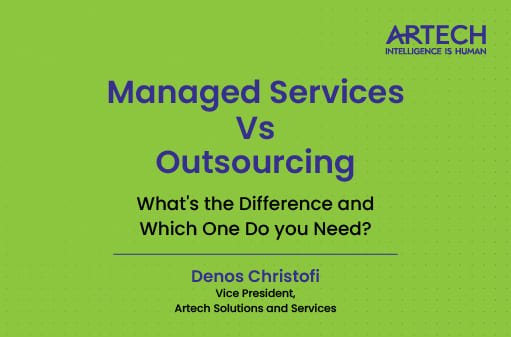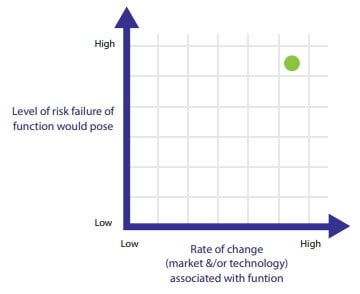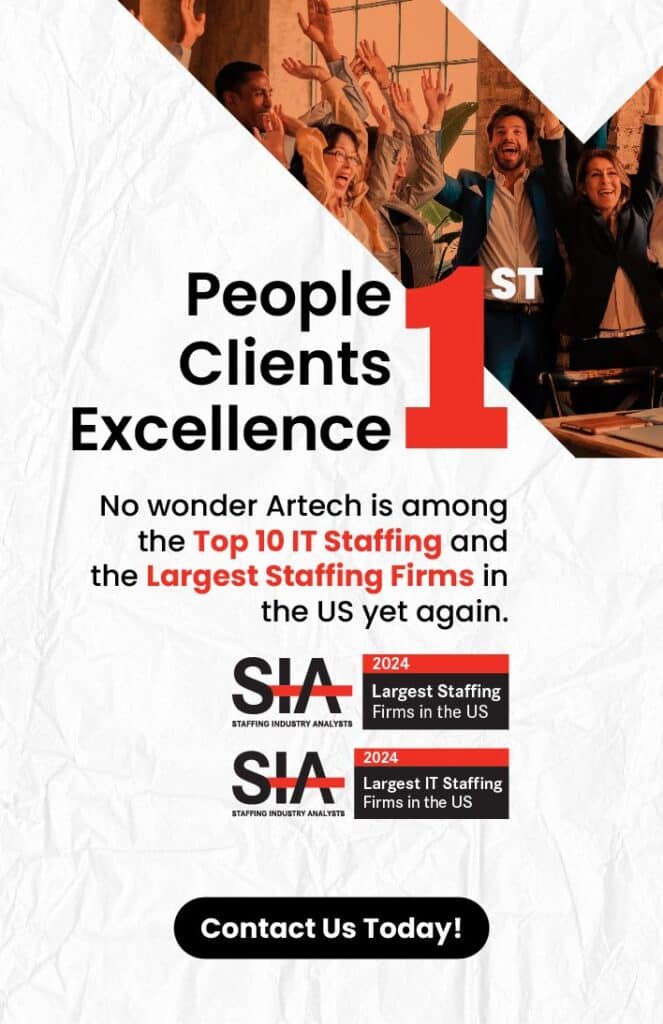
Confused whether to opt for Managed Services or traditional outsourcing? Use the Five Key Questions approach to understand which model is best suited to meet your business requirements.
In Brief
- While both Managed Services and traditional outsourcing involve procurement of services from an external provider, the two models represent very different value propositions.
- Managed Services represent a huge advancement on traditional outsourcing when compared on aspects such as cost predictability, flexibility, innovation, future-proofing, and outcome delivery.
- Five key questions can help you assess whether you should opt for traditional outsourcing or Managed Services.
Introduction
So, you have decided to take the plunge and bring in a third-party provider to deliver a business outcome.
Now comes the next question – should you be opting for Managed Services or outsourcing? Heck, you may be wondering, is there even any real difference between the two?
Aren’t Managed Services just a fancier version of traditional outsourcing? Not really!
While both managed services and outsourcing entail procurement of services from an external provider to meet business requirements, the scope and nature of service, and the benefits delivered by the two models, are very different.
This article helps you understand the difference between managed services and outsourcing and gives you pointers on deciding which option is the better fit for you.
Managed Services vs Outsourcing
First-generation versus second-generation is often used as a convenient framework to highlight the contrast between traditional outsourcing and managed services.
Traditional outsourcing, the first-generation outsourcing, has been around for more than two decades now. Managed Services, second-generation outsourcing, is a relatively recent model which has come up in response to market requirements and realities.
Do take note though, that the emergence of Managed Services represents a seismic shift from traditional outsourcing, not just an evolutionary change.
The Managed Services model is fundamentally different from traditional outsourcing, not just in terms of cost but also in terms of flexibility, control, and outcome delivery.
Today, both Managed Services and traditional outsourcing, co-exist in the market and offer different value propositions to their clients.
The comparison between the two models isn’t a debate about which one is better, instead it is intended to help you understand as to which one is better suited for your purpose.
Traditional Outsourcing
Traditional outsourcing involves contracting an external party to perform a specific, defined business activity or process with a view to reducing costs and freeing up in-house teams.
The outsourced tasks are usually non-core functions. Usually, IT tasks are the most common function that companies seek to outsource. However, organizations also outsource non-IT functions such as accounting, payroll, data-entry, document-scanning, customer interaction, and other such processes.
Traditional outsourcing is typically task or activity-oriented. Since the outsourcing firm specializes in the specific task/activity it has been contracted to deliver, it can execute the task/activity more cost-effectively and efficiently, helping you achieve cost savings and improved operations.
Another benefit is that outsourcing frees up your people to concentrate on core business needs and provides you the flexibility to add capacity when required.
The Quick 1-2-3:
- You define the activity you want done.
- The outsourcing firm executes the contracted activity as per agreed standards.
- You pay the outsourcing firm for the activity they perform; and, usually, this is lesser than the cost of doing the activity yourself.
Understanding Managed Services
Managed Services, second-generation outsourcing, too is built around the concept of hiring an external party to meet your internal requirements. However, the offering provided here is much more proactive and holistic.
The deliverable under this model isn’t just limited to the performance of a specific task or activity, instead the Managed Service Provider (MSP) is expected to proactively manage, support, execute and continuously improve the process/function contracted to it in alignment with your business objectives.
Managed Services, second-generation outsourcing, too is built around the concept of hiring an external party to meet your internal requirements. However, the offering provided here is much more proactive and holistic.
The deliverable under this model isn’t just limited to the performance of a specific task or activity, instead the Managed Service Provider (MSP) is expected to proactively manage, support, execute and continuously improve the process/function contracted to it in alignment with your business objectives.
The Quick 1-2-3:
- You define the business outcomes you want from a particular function/process.
- The Managed Service Provider proactively manages, supports, executes, and continuously improves the function in alignment with the outcome you want, as per agreed standards. This helps you create value.
- You pay the MSP on a consumption-based model, on the basis of usage of service, and avoid ownership costs.
The 5 Key Questions That Can Help You Make The Right Choice
Now comes the question of choice. How do you decide whether you should opt for Managed Services or traditional outsourcing?
Below are five questions, the guiding factors, that can help you evaluate which model is best suited for your purpose. Run your outsourcing requirement past these five questions to make an informed choice.
Question 1 : Is the objective business outcome achievement or effective task fulfilment?
Traditional outsourcing, as discussed earlier, is task or activity-oriented. You define the activity you want performed and the parameters you want it performed to. The outsourcing firm delivers it.
Managed Services, on the other hand, is outcome oriented. The MSP also performs the task, but with a perspective to achieve the broader objective of outcome delivery.
If the MSP feels that it needs to change the task definition to achieve the intended business outcome, the contract allows for this shift. You are not constrained by narrow, pre-defined specifications.
Sometimes, it is a little confusing to decide whether your objective is task performance or outcome achievement.
You want to outsource the customer help desk service. Won’t the traditional outsourcing model, under which you would specify that X amount of customer queries be met at Y levels of service, enough to deliver enhanced customer experience? Or do you need to enter a distinct managed service contract, focused on the business outcome of enhanced customer experience?
The checklist below can help you clarify your objective.

If the majority of answers are yes, your objective is oriented towards outcome achievement, and a Managed Services contract is the way ahead.
Question 2 : Do you need a proactive or reactive contract?
The proactive, forward-vision support provided by a good MSP is one of the key advantages that the Managed Services model provides.
How do you evaluate the significance of this advantage, given your unique context and needs?
There are two variables you need to consider:
- The level of risk that the failure of the function that is being outsourced would pose?
- The rate of change – in terms of market and/or technology change – associated with the function?
If your outsourcing requirements scores high on these variables, the proactive support provided by Managed Services could yield you a vital benefit.
Let us consider the example of a legal firm that wants to outsource its cybersecurity requirements. It could go for traditional outsourcing, wherein it has a service provider who will come in to fix a security breach as soon as it occurs, a reactive, break-fix contract.
Even when proactive, the outsourcer would primarily focus on the attack surface and the number of events. This would translate into a limited perspective. Instead of proactively future-proofing the environment based on the types of attacks experienced by its
customer as well as other customers in the industry, the outsourcer would concentrate only on actionable threats.
On the other hand, Managed Services would handle the cybersecurity requirement on a holistic, proactive basis. It would focus on maintenance and preventive action to ensure that no problems arise in the first place.
It would constantly monitor the evolving cyber threats in the industry while keeping up with technology improvements that make an environment more secure and resilient from all kinds of attacks.
And in case of an actual attack, the MSP would be well-equipped to address and remediate any damage that may have been sustained.

Since both – the degree of risk posed to the enterprise by a cyber breach and the rate of change associated with the data security function are high – the bank would do well to opt for Managed Services.
The quadrant offers you a quick way to figure out whether you need proactive or reactive contracts. If your requirements fall anywhere in the top right quadrant you need Managed Services.
Question 3 : Are you looking for a trusted supplier or a true partner?
Traditional outsourcing services are often projected as partnerships. The client wants a particular service, and the outsourcing firm is considered a partner who provides it.
However, this isn’t a true partnership. The client-vendor relation here is more in the nature of a trusted supplier relationship. You have contracted out a particular function, and the outsourcing firm provides it.
Under Managed Services, both you and the MSP are focused on achieving the same outcomes and the pricing too is often outcome-linked, either through SLAs or more recently through VLAs (Value Level Agreements.)
The ideal MSP also offers you a governance model that is specifically engineered to drive alignment across all levels, right from strategy to execution. This collaborative governance approach is a far more effective tool than a legal document that needs you to assemble a battery of lawyers for interpretation (and misinterpretation).
The shared goals between the MSP and the client translate into deeper, more collaborative contracts. What’s even more important is that the relationship extends beyond mere contractual terms set in a legal document; true partnership is achieved through the demonstration of tangible value, objective achievement and goal alignment.
To understand whether you need a partner or a trusted supplier, evaluate two points:
-
What are the kind of SLAs that resonate with you?
Traditional Outsourcing SLAs Managed Service SLAs - SLAs based on easily measurable indicators focused on individual components of vendor performance.
- SLAs focused on metrics such as specific availability, response and resolution time.
- More mature, holistic, business outcome-oriented SLAs.
- SLAs focused on indicators that link the service delivery to business drivers such as enhanced customer experience, new functionality delivery, ability to adapt to change, and continuous improvement that can lead to reduced revenue for the MSP.
-
Are you looking for a partner with business and functional experience who can offer you comprehensive, long-term solutions, or a process vendor who can help you meet an immediate, specific requirement?
Managed Services would make sense in the first scenario, while traditional outsourcing would be a good fit in the second.
In traditional outsourcing, the focus is on finding a vendor who has strong functional experience in meeting your requirement. For instance, if you want to outsource an IT requirement, you would seek a vendor with the technical skills and requisite experience in delivering that requirement.
However, Managed Services offers more mature project governance. Along with
high-quality functional talent and experience, it also provides business strategy focused resources. The MSP’s focus on business strategy helps it construct, deliver and continually improve long-term solutions that can deliver the outcome you need.
Question 4: Is the benefit case you are seeking value creation or cost-saving?
The primary driver for traditional outsourcing is cost-saving. Efficiency improvement too is a supporting factor. When it comes to Managed Services, the expectation is broader. A mature client expects to be able to leverage Managed Services to create breakthrough value and accelerate business transformation.
The checklist below highlights the benefits that Managed Services yield. Applied in conjunction, these benefits help an organization to drive innovation and value.
If you feel that your organization is seeking a benefit case beyond Point 3, Managed Services may be the right approach:
| Sr. No. | Benefit | No | Yes |
|---|---|---|---|
| 1 | Cost Reduction | ||
| 2 | More efficient performance | ||
| 3 | Productivity Improvement | ||
| 4 | Scalability | ||
| 5 | Flexibility | ||
| 6 | Agility | ||
| 7 | Financial predictability | ||
| 8 | Project delivery risk mitigation | ||
| 9 | Reduced Capital Expenditure | ||
| 10 | Increased technology adoption |
Question 5: Would you prefer flexible, innovative contract terms or a more fixed structure?
Managed Services contracts typically offer much higher flexibility than traditional outsourcing contracts.
Do you feel that you need scalable, transparent contracts, that provide for variable conditions and contingencies, to cope with the shorter business cycles and the complex, ever-shifting markets of today? If so, you may want to explore the Managed Service option.
Managed Service contracts provide:
- Innovative pricing terms such as:
- Usage-based pricing: This utility style, pay-per-use services, allows organizations to scale up or down almost on demand.
- Risk/reward sharing arrangements. In case savings and efficiencies are achieved, the MSP shares the benefit with the client in terms of capacity discounts or tenure discounts.
- Output-based pricing model vs the typical hourly billing approach. This translates into expense predictability for the client.
- Flexibility around scope and term: As the deliverable is the business outcome itself, the contract provides for changes in scope and term of activities and tasks to ensure that the preferred outcome can be delivered.
- Variability Cushion: The scope for evolution and change as the business changes over time are factored into the contract.
Summary
When contemplating outsourcing you need to consider five key factors to evaluate which outsourcing model, traditional outsourcing or Managed Services, is better suited to meet your needs. You need to assess:
- What’s your objective – Business outcome achievement or effective task fulfilment?
- What’s the kind of support you need – Proactive or reactive?
- What’s the relationship you are looking for – True partner or trusted supplier?
- What’s your focus – Value creation or cost saving?
- What’s the contract structure you prefer – Flexible & innovative, or more fixed?
These questions will guide you in making an informed outsourcing decision.
Discover Managed Services from Artech
From vision to delivery excellence, Artech’s Managed Services are enabling clients across the globe to achieve the business outcomes they need, intelligently.
To know more about how our solutions can add value to your organization, write to us at bruce.gerken@artech.com
This content is crafted with care by Artech Staff Authors. While it reflects our commitment to quality and accuracy, please note that it is not authored by industry experts. We aim to offer valuable and engaging information, and for more specialized or technical advice, we recommend consulting with professionals in the relevant field. If you have any concerns or require further assistance, please contact us at support@artech.com. Thank you for trusting Artech as your source of informative content.








